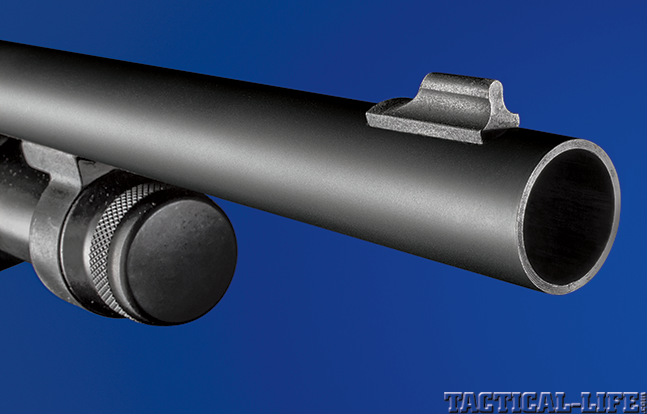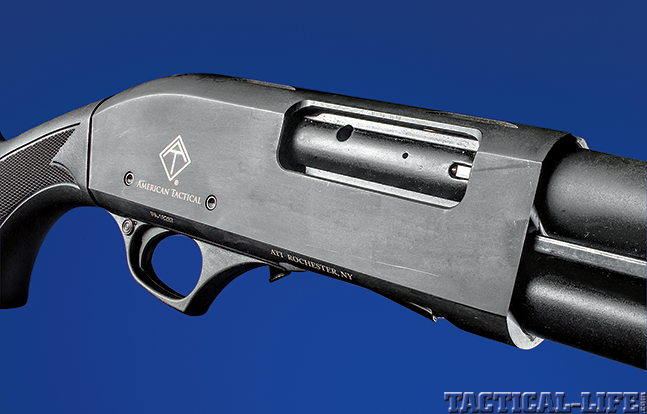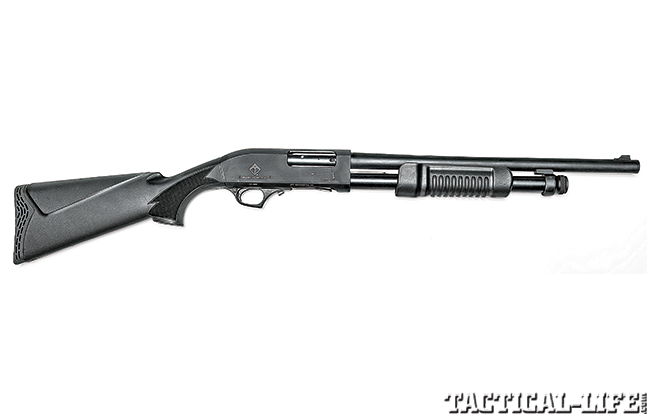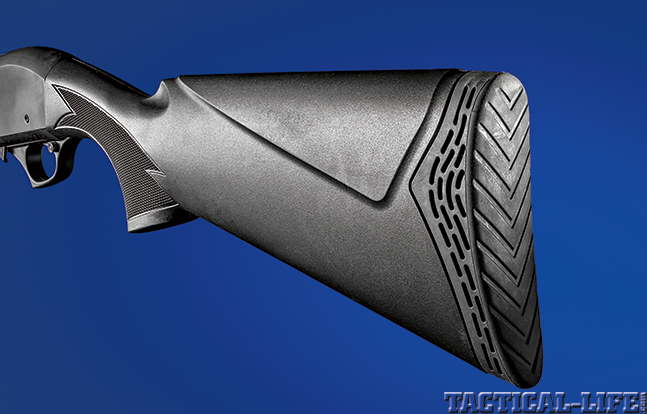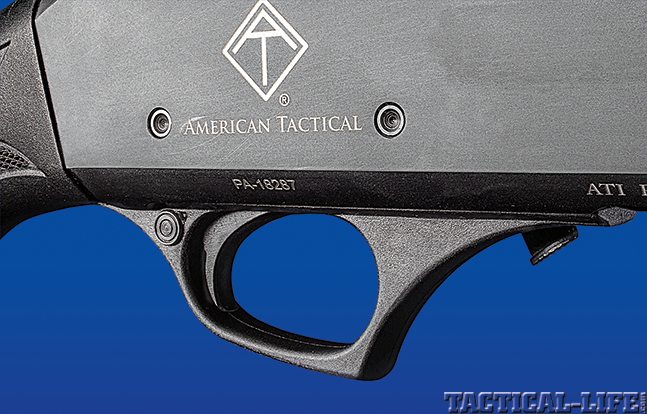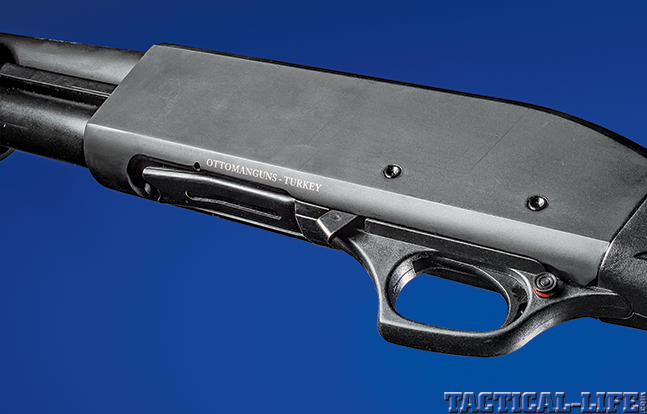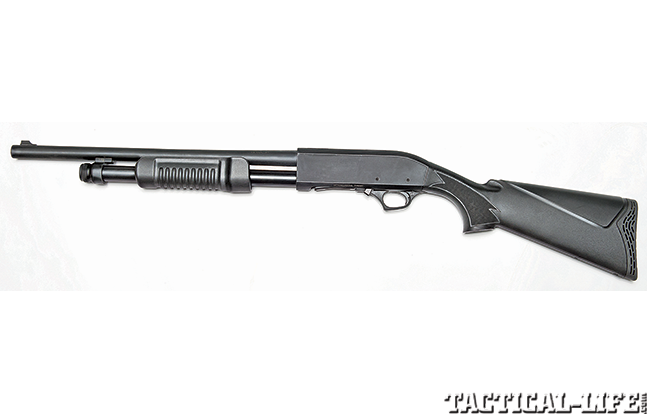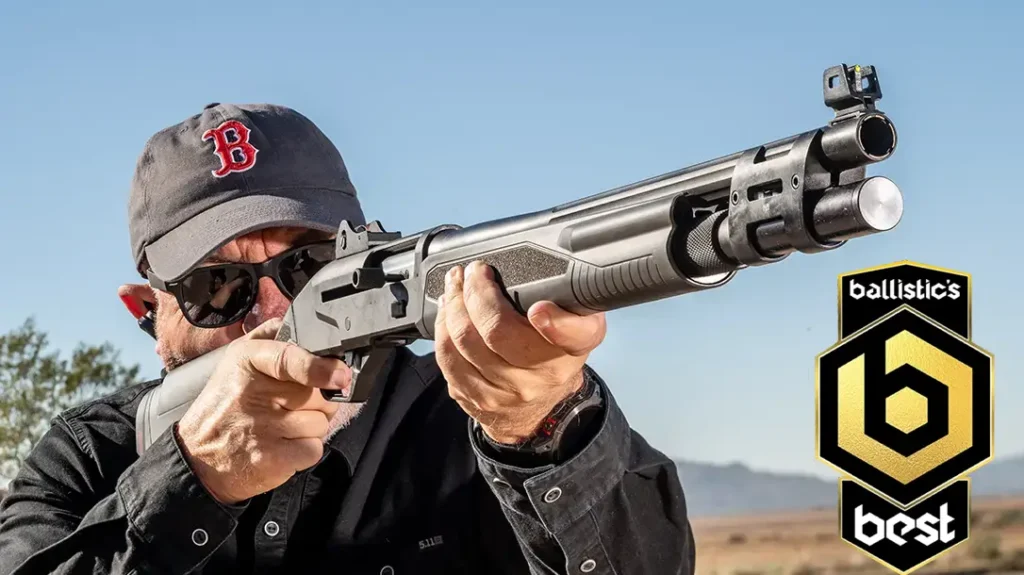Needless to say, everyone these days is looking at how to save money without cutting corners. Civilians are doing it, as are law enforcement agencies.
To that end, there is a solid need for proven tactical shotguns for duty use that will not break the bank. A great example of one of these is the TACPX2 from American Tactical (ATI). It is a 12 gauge, 18.5-inch-barreled, pump-action shotgun that is made in Turkey by Ottomangunsand imported into the U.S. by ATI. It’d be hard for you to find a more affordable pump shotgun ready for duty. Period.
- RELATED: Gun Review: American Tactical’s Durable Omni Hybrid 5.56mm
- RELATED VIDEO: ATI’s Titan Lightweight 1911 Shaves 5 Ounces Off Predecessor
Upon visual examination, it is immediately evident that the TACPX2 shotgun closely follows the design of the Remington 870, and who can blame it for that? If I were to attempt to design a firearm, I firmly believe replicating one of the bestselling, most popular firearms of all time would be a great way to start. Just like its inspiration, this shotgun features a bottom-loading, side-ejecting receiver with a magazine tube under the barrel. The big-gest difference I noticed came when I picked the shotgun up: The TACPX2’s receiver is made from aluminum as opposed to steel, and wthe entire gun is a lot lighter as a result. For use on the job, this makes a huge difference, and it’s a great advantage over some other shotguns that weigh as much as twice what this one does. My test TACPX2 came with an appealing all-matte-black finish that included the polymer stock and forend. Its crossbolt safety is in the same place as the 870’s—just behind the triggerguard—and the action release button is just in front of the triggerguard as well. If officers are used to the 870, it’ll be easy to transition to this shotgun, as every control works exactly the same.
Advertisement — Continue Reading Below
The TACPX2 is capable of firing 2¾- or 3-inch shells and will hold five shells in the magazine tube plus one in the chamber when fully loaded.
Because of the aluminum receiver, the shotgun weighs 5.95 pounds unloaded, and there are actually two things present on this shotgun that my personal 870 does not have: It features a ramped, rifle-style front sight to accompany the rear sight notch, and scope mounts are milled into the top of the receiver on either side of the rear sight.
The TACPX2 came in a cardboard box with a gun lock and paperwork. After making my initial observations and picking the shotgun up, I went ahead and took it apart to see what the fit and finish looked like on the inside. I unscrewed the magazine end cap and pulled the barrel off—just as you might with any pump shotgun. Upon removing the innards of the TACPX2, one of the biggest things I noticed initially was that the bolt can easily be removed without any manipulation of the shell latches. Once the barrel was removed I simply pulled forward on the forend and the entire bolt and carrier came out on the twin action bars. Upon removing the bolt, another noticeable difference between this shotgun and the 870 is that the bolt carrier is actually a part of the action bars and isn’t removable from the forend assembly.
Advertisement — Continue Reading Below
“The shotgun is a straight shooter, and it ran without any hitches at all.”
The bolt is solid steel and has a single extractor on the right-hand side. The groove located on the left side of the bolt that would normally allow for an extended ejector on the inside of the receiver itself is actually just a groove to allow the bolt to move around—an interesting concept for an ejector on a shotgun. The entire ejector is simply a bump on the inside of the receiver and appears to rely on aggressive manipulation of the action to eject properly.
The last thing I did for disassembly was take out the two pins holding in the trigger group, removing the trigger group from the receiver. The pins were easily removed with a standard punch but were held inside the receiver with the appropriate amount of tension to avoid being worked out while operating the shotgun. The trigger housing itself is comprised of mostly high-impact polymer, with the parts that take the wear and tear being metal. There are also some obvious differences inside the trigger group. The safety, for example, cannot be readily switched over for a left-handed shooter as easily as it is on an 870.
Advertisement — Continue Reading Below
Range Time
Satisfied with what I found internally, I reassembled the TACPX2 and headed to the range. One of the first things I wanted to test was the shotgun’s ejector design. Now, on the 870, Remington actually stakes the extended ejector through the left side of the receiver to assist in positive ejection. But this is a double-edged sword: It makes the shotgun ultra-reliable in regards to positive ejection, but if the ejector is broken, then the user is forced to have a competent gunsmith reinstall and re-stake a new ejector. Being a separate piece from the receiver does inevitably make the part more susceptible to breakage.
Advertisement — Continue Reading Below
With the TACPX2 there is only a small bump cast into the receiver to serve as the ejector. Being a part of the receiver minimizes the chance of breakage, and I thought the concept was interesting to say the least. It works in conjunction with the extractor and, as I thought, relies upon strong manual manipulation of the forend in order to be most effective. To prove this, I loaded one shell directly into the ejection port and closed the action. I then slowly opened the action and moved it all the way to the rear while observing the shell in the chamber. The extractor pulled the shell to the rear and then simply released the shell at the point of contact with the ejector “bump.” I then combat-loaded the same shell and moved the action to the rear a little faster—the shell came out, away from the shotgun, as designed. On the third try, I combat-loaded the shell and worked the action as I normally would—which is to say I did not baby the shotgun but brought the action all the way back and then all the way forward briskly and, as I expected, the shotgun functioned flawlessly. I personally find this ejector to be functional as well as interesting in concept.
Shooting the TACPX2 was also intriguing. The shotgun is a straight shooter, and it ran without any hitches at all. However, this shotgun isn’t soft shooting. That isn’t to say that it is too abusive, but due to its extremely light weight, the recoil from a full-power slug or buckshot charge is not something I want to experience excessively. All shotgun shooters understand that basic physics are applied when handling something as powerful as 12 gauge slugs and buckshot—and a comfortably light, easy-to-carry shotgun simply is going to recoil more than a heavy one. Fortunately, most agencies today recognize the inherent advantage of reduced-recoil shotgun ammo, and that should certainly help a lot.
I tested the TACPX2’s accuracy at 25 yards with 1-ounce slugs and ran the shotgun through its paces using a variety of ammo. I tested the shotgun with reduced-recoil Federal Law Enforcement slugs, Winchester Super-X slugs and Federal Power-Shok slugs. All three shot five-round groups well at 2.75, 2.5 and 2 inches even, respectively. Two of the five shots with the reduced-recoil Federal slugs fell into the same hole.
Advertisement — Continue Reading Below
After extensively testing the TACPX2, I can wholeheartedly recommend it as a tactical LE shotgun. It is relatively inexpensive and based upon a tried-and-true design, featuring some extras not even found on much more expensive offerings from other manufacturers. If you find yourself in the market for a lightweight, economical pump shotgun, give ATI a chance. I think you will like the result.
For more information, visit americantactical.us or call 800-290-0065.

